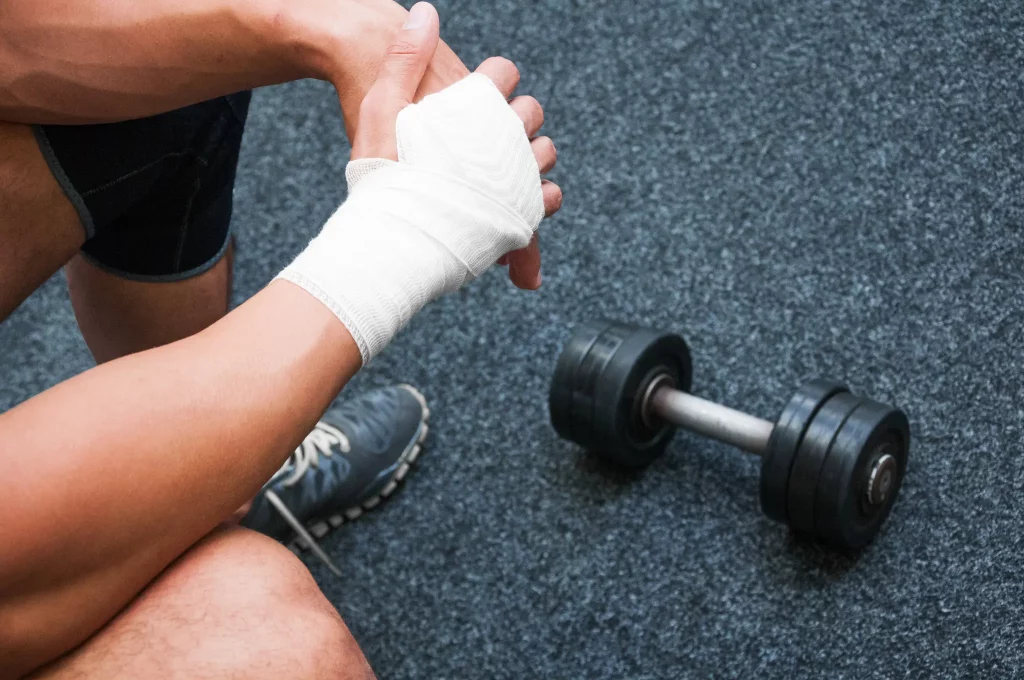BROKE YOUR RIGHT ARM? EXERCISE YOUR LEFT. IT MAY HELP, REALLY.
Working out the muscles on one side of our bodies can keep the muscles on the other side fit, even if we do not move them at all.
If you sprain an ankle or break a wrist this summer and cannot use one of your limbs, the muscles there will weaken and shrink — unless you exercise those same muscles in your other limb.
According to a fascinating new study, working out the muscles on one side of our bodies can keep the muscles on the other side strong and fit, even if we do not move them at all. The finding has implications for injury recovery and also underscores how capable and confounding our bodies can be.
Many of us — or a family member — will at some point break a bone, tear a ligament or experience a neurological problem such as a stroke that makes it impossible to move an arm or leg normally.
When that limb is immobilized, its muscles will atrophy, losing size and strength, a process that begins within days or even hours of an injury.
There have been hints, though, that exercising one limb can affect the other. In past studies, when someone pedals a bike with one leg or lifts weights with one arm, muscles in the other limb often contract, a development known as mirroring.
But in most of those experiments, the unused limb was not completely immobilized with a cast and scientists did not focus on specific muscles, making it difficult to know whether exercising certain muscles in one limb affects all muscles in the other or only some.
So for the new study, which was published in April in the Journal of Applied Physiology, researchers from the University of Saskatchewan in Canada gathered 16 male and female college students and closely examined their wrists.
Using ultrasound and CT scans, the scientists determined the precise dimensions of two separate sets of muscles in that joint: the extensors, which move the wrist back and away from the body; and the flexors, which pull it in, toward the forearm.
The researchers also tested each volunteers’ wrist strength using a weight machine for the hands.
Then they covered each student’s left forearm and wrist with a hard cast to freeze the wrist in place. (All of the students were right-handed.)
Half of the students were then asked to go on with their normal lives, ignoring the cast as much as possible and not exercising their arms.
The other eight students, though, began a workout program that targeted the flexor muscles in their wrists. Using a small, vise-like weight machine, they completed multiple, strenuous, eccentric contractions of those particular muscles. Eccentric contractions involve lengthening a muscle while contracting it and are known to potently build muscle strength and size.
In the meantime, the researchers attached tiny sensors above the flexor muscles in the volunteers’ immobilized wrists to measure any contractions there.
After a month, all of the volunteers returned to the lab, had their casts removed and repeated the original measures of their muscles.
As expected, the volunteers who had not exercised showed considerable muscle atrophy now. Their left wrist flexors were more than 20 percent weaker, on average.
Those muscles also had shrunk in size, dropping about 3 percent of their mass.
But the group that had exercised their right wrists’ flexor muscles had maintained almost all of those muscles’ original size and strength on the left.
The benefits were quite specific, though. These same volunteers’ wrist extensor muscles, which had not been exercised in their right wrists, were atrophied on the left.
The implication of these findings is that exercising muscles on one side of your body can lead to beneficial impacts on the other side, says Jonathan Farthing, an associate professor of kinesiology at the University of Saskatchewan who conducted the study with his graduate student Justin Andrushko and other colleagues.
But those effects apparently extend only to the particular muscles that are exercised.
And the entire process seems to involve more than just muscular mirroring, he says. The sensors placed above the volunteers’ cast-bound wrists picked up some muscular contractions in the left flexors when their right-side counterparts exercised.
“But those contractions were very slight,” he says, and by themselves are likely to be insufficient to keep the muscles healthy and strong.
He believes that there could be changes in the nervous system during unilateral exercise that somehow reach and change the same body part on the other side.
Various biochemical substances might also be released by the working muscles and make their way to the corresponding contralateral muscles, where they could jump-start physiological processes related to muscle health.
But how the substances would manage to target the specific muscles in question “is a mystery,” Dr. Farthing says.
He and his colleagues plan to investigate some of those issues in upcoming studies.
But for now, this experiment’s results strongly suggest that if you or a loved one winds up in a cast in the coming months, you may want to talk with your physician or physical therapist about exercising your uninjured limb, Dr. Farthing says.




